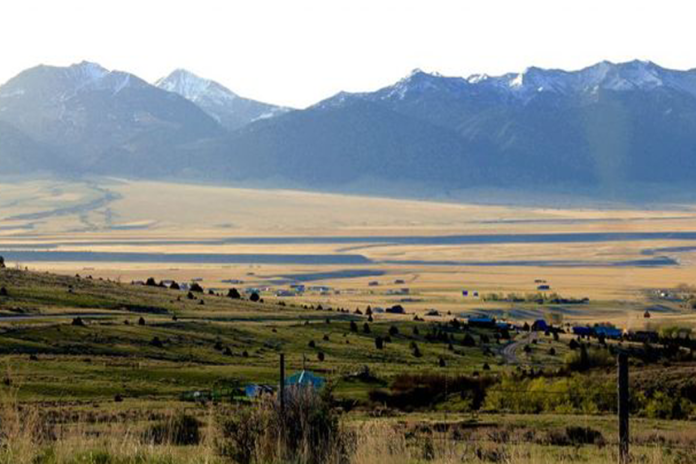Mary Smith, famously known as a “knocker-upper,” was a significant figure in London’s East End during the 1930s.
Her job was to wake workers early in the morning so they would not be late for their shifts, a critical service at a time when alarm clocks were neither affordable nor reliable for everyone.
Mary Smith used a pea shooter to fire dried peas at the windows of her clients to wake them up. This method was her unique approach to the job, which was typically done with a stick or other means to tap on windows or doors.
She earned around sixpence a week for her services, which was standard for knocker-uppers at the time.
Mary Smith operated in East London, with her activities well-documented around the 1930s. Her work was part of a broader profession that emerged during the Industrial Revolution and continued until affordable alarm clocks became common.
The profession of knocker-uppers highlights the societal changes brought by the Industrial Revolution where strict work schedules became the norm, necessitating reliable methods for people to wake up on time.
Mary Smith became somewhat of a local legend, not just for her job but for her character. She’s remembered not only for her pea-shooting method but also for her interactions with her community, offering a glimpse into daily life in industrial Britain.
Her story has been referenced in various forms of media and literature, showcasing interest in this quaint occupation that once played a crucial role in urban life.
Mary Smith’s life as a knocker-upper provides a fascinating look into historical occupational necessities and the ingenuity of individuals like her in adapting to the needs of their time. Her story, preserved through photography and anecdotes, offers a window into a bygone era’s morning routine.
Anecdote:
But who woke the knocker uppers? A tongue-twister from the time tackled this conundrum:
We had a knocker-up, and our knocker-up had a knocker-up
And our knocker-up’s knocker-up didn’t knock our knocker up
So our knocker-up didn’t knock us up
‘Cos he’s not up.
“The knocker uppers were night owls and slept during the day instead, waking at about four in the afternoon,” – author Richard Jones.
 I guess that the Knocker-Uppers of their day did a pretty good job at helping folks to wake up in time to make it to work.
I guess that the Knocker-Uppers of their day did a pretty good job at helping folks to wake up in time to make it to work.
I’ve got a feeling that if I were living then back in the day that this is what my windows would have looked like on account of my liking to sleep in.





Montana Constitutional Initiative 126 (CI-126)
Montana Constitutional Initiative 126 (CI-126) is a ballot measure aimed at reforming the primary election system in Montana for various state and federal offices.
CI-126 seeks to implement a top-four primary system. Under this system, all candidates for specified offices run in a single primary election, regardless of party affiliation. The four candidates receiving the most votes in this primary would then advance to the general election.
This initiative applies to elections for governor, lieutenant governor, state executives like the secretary of state, state legislators, and congressional offices.
Currently, Montana has separate party primaries where voters can only participate in one party’s primary. CI-126 would replace this with a nonpartisan blanket primary, giving voters more choice by allowing them to vote for any candidate, not limited by party lines.
Proponents argue that this change would encourage candidates to appeal to a broader electorate rather than just their party base, potentially leading to more centrist or moderate candidates. It’s seen as an attempt to reduce party polarization and give more power to independent voters.
Critics of the measure, including some within the Republican Party, have argued that it could lead to confusion among voters, potentially disenfranchise them, and might subtly promote ranked-choice voting or other voting systems through the back door.
There’s been significant discussion around CI-126, with groups like Montanans for Election Reform supporting it, citing it as a way to return power to the voters. Conversely, opposition has come from those who believe it could disrupt the traditional two-party system or lead to unintended voting complexities.
This initiative is part of a national trend towards reforming election systems to encourage broader voter participation and representation beyond the traditional two-party framework.
If passed, voters would see a primary ballot with candidates from all parties listed together, choosing from this list without party restriction, which could theoretically lead to more diverse candidate selection in the general election.
This initiative reflects ongoing debates about voter choice, party influence in elections, and the mechanics of democracy, showcasing Montana’s engagement with electoral reform trends.
Montana Constitutional Initiative 126 (CI-126) could move us in a rather better direction as it might relate to political parties in general. Our first American President George Washington, had a thing or two to say about political parties when he gave his farewell address to the nation.
Instead of parties, Washington advocated for a unified government where the focus would be on shared national interests rather than partisan goals. He hoped that the love for liberty and the country would be enough to bind the nation together without the need for political parties. – What George Washington had to say about political parties
Note:
In the news: Over 200,000 signatures gathered to qualify both CI-126 & CI-127 for general election ballot
CI-126 (Ballot Issue #12) has been certified to appear on the November 5, 2024, General Election Ballot.
CI-127 (Ballot Issue #13) has also been certified to appear on the November 5, 2024, General Election Ballot.